Ragga Jungle
byThe rise, the heyday and the decline of ragga jungle took place between 1993 and 1995 although the genre was born at the same time as jungle. The start was made in 1990 when the creators of proto jungle Shut Up & Dance took Ragga Twins, a duo of two talented brothers under their wing. Their Ragga trip track lay the foundation of ragga jungle. The word jungle is used here only to make the situation clear since in 1990 jungle was not considered a separate genre, it was only a small sub-movement of UK hardcore and nobody saw ragga jungle coming.

Ragga is an independent Jamaican movement that originates from reggae. Electronic music flourished becoming available all over the world. When it came to Jamaica in the middle of the 1980s, youngsters from Kingston started to call themselves raggamuffins and developed their own philosophical vision and lifestyle. Aggressive rapping to drum machines took over reggae songs that praised love, peace and god. Their flow and presentation is best described by the expression ‘kill steal.’ A bandit, a rude boy, a sexy gangster, a stoner—this is what a ragga MC can be in his lyrics. Word has it that raggamuffins adopted the style of rudeboys—aggressive Jamaican youth subculture that was especially popular in the 1960s and declined by 1970s.
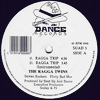
The Ragga Twins — Ragga trip 1990
From Ragga trip / Hooligan 69 single, Shut Up And Dance Records
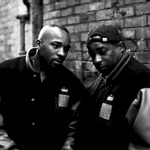
Ragga Twins
Ragga MCs typically used Jamaican creole language (patois—a speech used by slaves taken to Jamaica from various African tribes; the language is still used nowadays by the majority of the island’s population), Jamaican English which is the official language of the country, and a whole set of words and phrases that came from Rastafarian culture.
American MCs emerged in hip hop in the late 1970s, Jamaican masters of ceremony appeared in the late 1960s. The were called toasters then: a DJ and an MC all in one ‘toasted’ over the instrumental versions of the songs which involved chanting in a monotone melody, crying out boastful comments or popular expressions. Until ragga was popularized in jungle, the MCs used to be true masters of ceremony: they were the ones to announce the musicians, warm up the audience, cried out the tracks’ titles. They just didn’t take all the air time, serving as entertainers rather than solo artists.
In July of 1994 18 year old
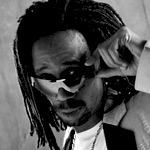
General Levy
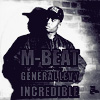
M-Beat feat. General Levy — Incredible 1994
Perfomed by Paul Scott Levy
From Incredible single, Renk Records
And they got it right: the single Incredible turned out to be a breakthrough. Too catchy to stay within the confines of the underground scene, it quickly reached the mass audience. It was the first time a jungle track entered the British national chart at number 40, later reaching number 38. The same year saw the release of several remixes of the Incredible that attracted more attention to the track helping it reach number 11 and later peak at number eight. 150 000 copies of the single were sold by October. The duo

Prizna — Fire (Urban Shakedown remix) 1995
Perfomed by Wayne Decordova
Remixed by Claudio Giussani, Gavin King
From Fire single, Labello Blanco Recordings
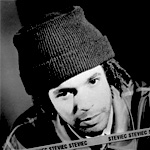
Conquering Lion
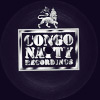
Conquering Lion feat. Super Cat — Code red 1994
Perfomed by William Maragh
From Code red single, Congo Natty
Conquering Lion (aka Rebel MC) is yet another person who influenced ragga jungle. Some say that it was him who started to call the ragga jungle fans junglists giving the word a new meaning. Only rebellious residents of Kingston’s Conrete Jungle area called themselves junglists until that time. Michael West inserted a fragment from an old dancehall track with the words ‘alla the junglists’ in his own record. It became quite well known and people would chant this motto along. The members of audiences felt a strong bond, they were all junglist brothers, rude bad boys united by the vibes of music. This is when the word came into common use.
Ragga jungle was gaining momentum. First, as any other underground trend that suddenly came into the spotlight, this musical style attracted attention to its loyal fans who humbly believed in their favorite music for quite some time yet had been ignored up until that moment. Second, there came derivative musicians, clones ready to crank out tracks of the same type not caring about the message. Ragga jungle became the next big thing. Street Tuff, an affiliate of the major reggae record label Jet Star Records, released epic compilation Jungle hits. Volume 1 that was immediately snapped up and then topped the British album chart. It debuted as the 5th best selling compilation album in UK, then fell to number 20 and stayed there for 8 weeks.
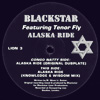
Blackstar feat. Tenor Fly — Alaska ride 1995
Perfomed by Jonathan Sutter
From Alaska ride single, Congo Natty
Original nuttah is considered ragga jungle’s anthem as well as Incredible—a piece that can be demonstrated as an excellent example of the movement. The track starts with the fragment from Scorsese’s “Goodfellas” followed by the sound of alarm and then the loud-voiced Abdul Wahab Lafta
People say that Original nuttah paved the way for ragga jungle musicians to glamorize the criminal activity in their tracks. When hip hop stole the scene in the US, jungle was gaining momentum in the UK. It seems that British ragga jungle and American gangsta rap both rich in gangster and crime references followed the same pattern and were to some extent opposed to each other. Eager to disclose their true colors, musicians waved gunshots into their tracks—sounds of gun or submachine gun shots. (Congo Natty label musicians were notorious for the extensive use of this effect). A single named Gangsta Kid also released in 1994 was the predecessor of Original nuttah: it featured the same drums, the same alarm sounds and the sample from “Goodfellas”. The only thing different were the vocals of another MC, Gunsmoke. The single was included in several compilations under the name of Original gangsta, in reference to Original nuttah.
Shy FX feat. Gunsmoke
Original gangsta
1994
Soon ragga jungle became famous overseas. American label Moonshine Music purchased the rights to 11 songs and the 1st of October of 1994 saw the compilation Law of the Jungle released in the US, presenting the British wonder to the listeners from across the Atlantic. The British music community got concerned—this unexpected fame of ragga jungle was not what they wanted for jungle, their brainchild that they had been polishing and refining for the last five years. Mouthy loud MCs got out of nowhere and in a matter of a few months made jungle viral. And they would not be silent about it, they gave out interviews to the journalists who were eager to learn more about the new British musical phenomenon. That is where things got interesting.
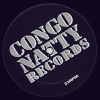
Rebel MC feat. Top Cat — Champion DJ 1995
Perfomed by Anthony Codrington
From Champion DJ single, Congo Natty
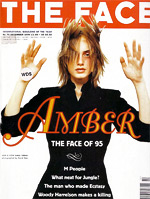
“What next for jungle?”—one of cover lines on The Face magazine. December 1994
This is a quote from General Levy’s interview for The Face, popular British magazine: “I run jungle at the moment. I came along and bigged up jungle. I took it national.” It was the final straw. “There was nothing wrong with the tune [Incredible]. The tune was a bad tune. It represented for real. What was wrong was the fucked-up way they went about doing it. ‘Levy’s King of the Jungle ... Him run things.’—He didn’t know the real players,” retorted 5ive’0, a veteran MC.
(This is off topic: a lot of ragga jungle tracks recorded in 1994 and 1995 featured drum fills typical of hardstep as well as basslines typical of
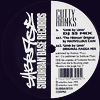
Cutty Ranks — Limb by limb (DJ SS remix) 1995
Remixed by Leroy Small
From Limb by limb single, Suburban Base Records
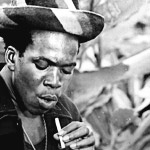
Barrington Levy
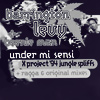
Barrington Levy & Beenie Man — Under mi sensi (X Project remix) 1994
Perfomed by Barrington Levy
Remixed by Michael West
From Under mi sensi single, Greensleeves Records
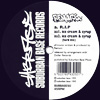
Remarc — R.I.P 1995
From R.I.P / Ice cream & syrup single, Suburban Base Records
The movement took the wrong track. Ragga became the equivalent of jungle in people’s minds. Musicians, DJs and promoters realized what was happening and hosted a forum where they discussed options for controlling the music scene. It was suggested that everyone should team up and exclude anything ragga jungle related from the playlists and boycott General Levy as well as anyone who would dare to play ragga tracks. All these measures were aimed at weakening Levy’s influence. There would always be people who made music in the hope of gaining easy money and genuine artists wanted to protect what they loved and believed in. True ravers who saw it all including hardcore, happy hardcore and darkcore, did not quite get the idea of using ragga samples in jungle. Lots of listeners, regardless of skin color could not understand ragga MCs’ lyrics while those who could found it difficult to relate to them due to numerous references to violence and sexism. It’s not that ragga lyrics are devoted to nothing but vengeance yet this topic really is overwhelming. The majority of jungle musicians agreed that ragga does not have a lot in common with jungle—just about as much as chalk and cheese.
The union aimed at reducing General Levy’s influence spent some time trying to clear the genre out of gangsta chants, but it was too late—it seemed that by that moment everyone came to strongly associate jungle with ragga. Compilations of ragga jungle music were released almost daily, the rude bwoii culture was all over the place; jungle in a real, initial sense of the word fell into oblivion and many crucial musicians realized it. Starting from 1995 Groove Connection agency encouraged the new sound and was among the originators of a new musical movement. “However much I can say I totally loved the energy of that Jungle sound, we knew we had to keep moving forwards otherwise the thing would stagnate,” confessed Sarah Sandy, one of the agency’s members. It was the time when the legendary split of musical scene began.
Music & stories
12″ pages on social networks and weekly materials that you can’t find on the website. Cool electronic music videos, tune of the week, histories behind albums and FridayFive tracks. Join!